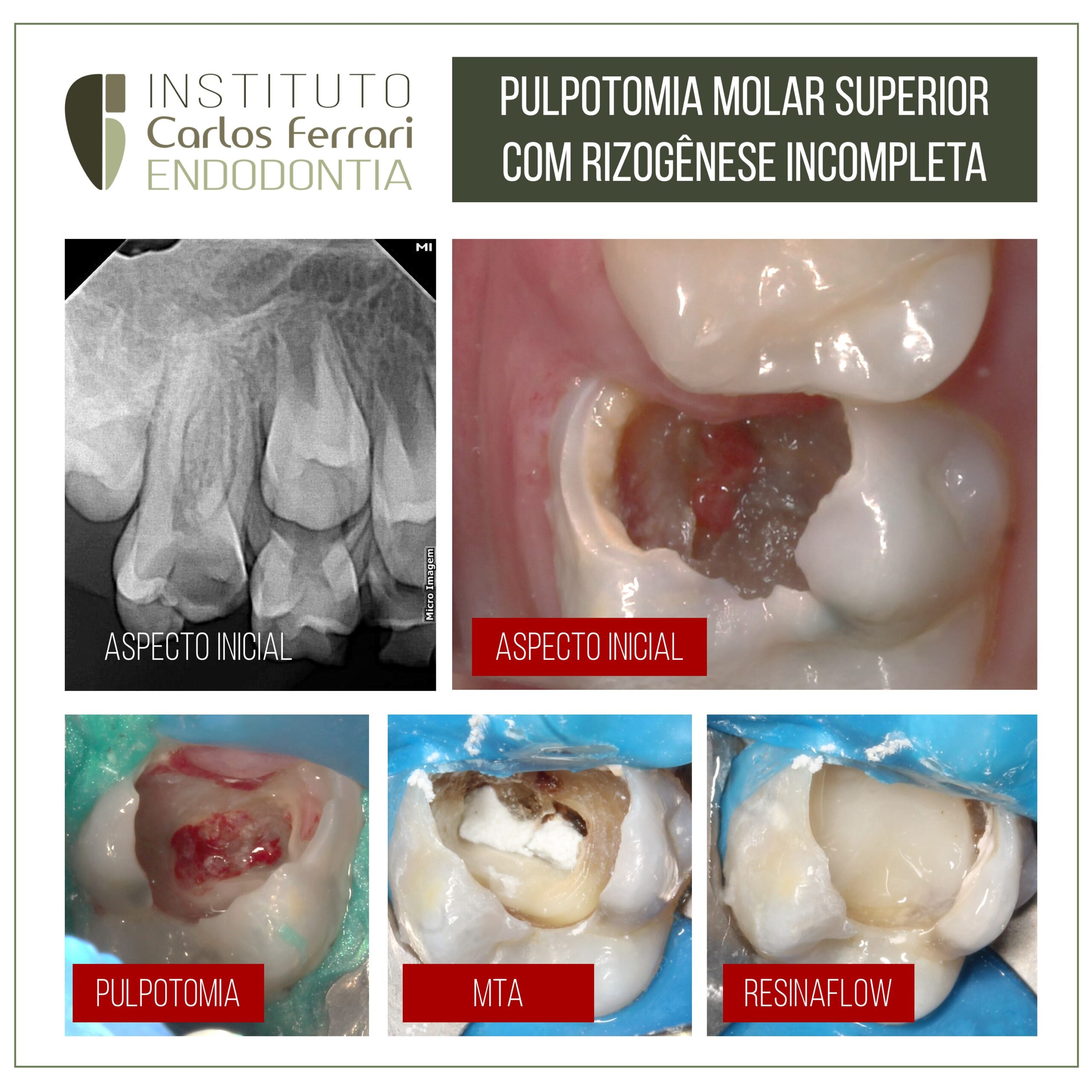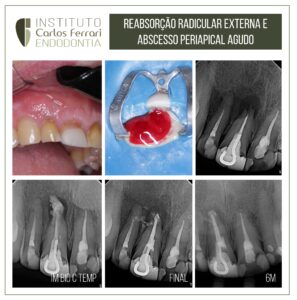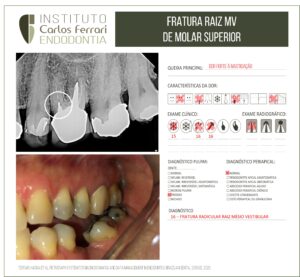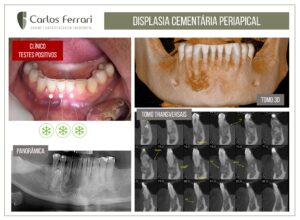Pulpotomy with MTA.
Responsible for the 8-year-old patient sought the clinic for treatment of molar teeth with generalized extensive caries. Tooth 16 clinically presented with extensive caries and pulpal exposure, with no pain complaint. Radiographic examination showed incomplete root formation at Nolla stage 8. The proposed treatment was pulpotomy, performed with curettage of the coronal pulp, irrigation with saline solution and placement of MTA in contact with the remaining pulp inside the root canals.
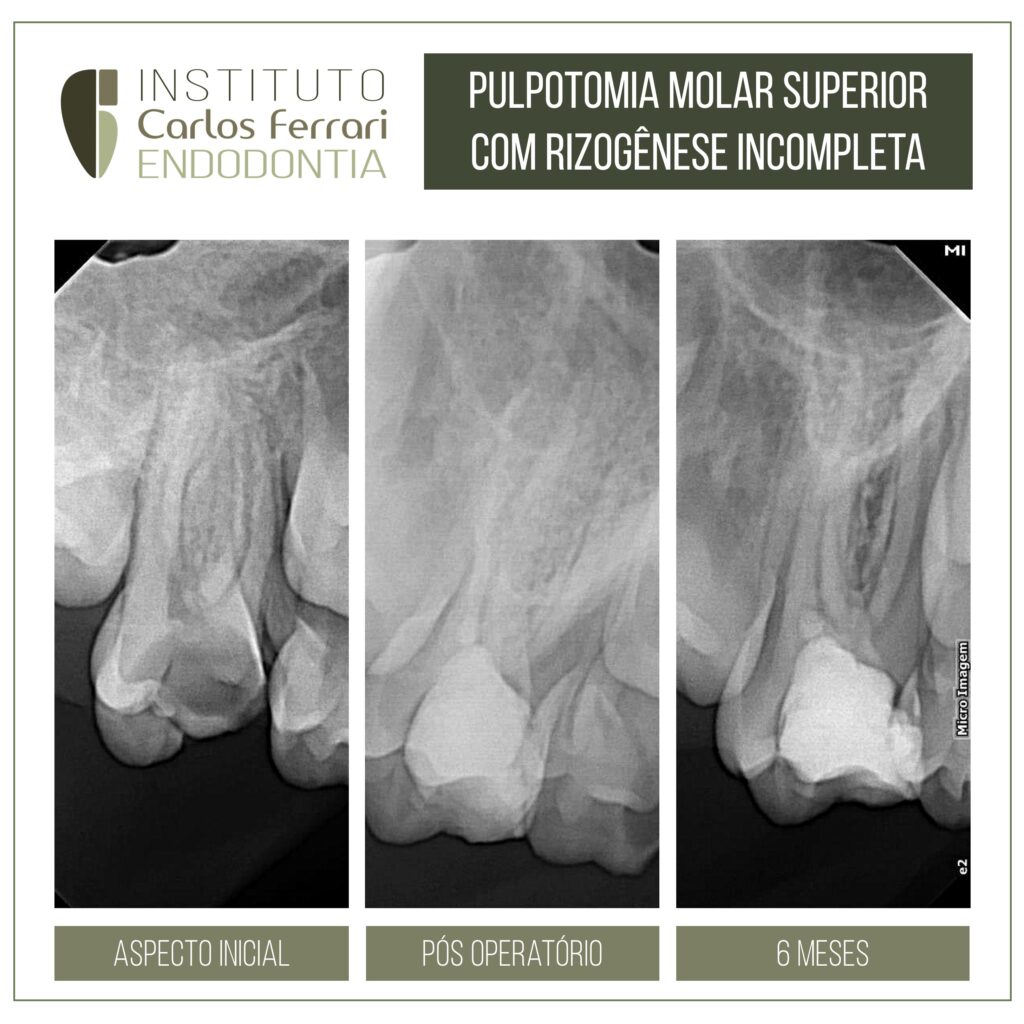
After 6 months, the patient returned without any symptoms and continued root formation is observed.
Case performed by the dental surgeon Maria Caroline Dorigan, student of the specialization course in endodontics at APCD Bragança Pta.
In: Eghbal et al.
MTA pulpotomy of human permanent molars with irreversible pulpitis. Aust Endod J 2009; 35: 4-8
Introduction
Pulpotomy is a vital pulpal therapy in which a portion of vital coronal pulp tissue is surgically removed and the remaining root dental pulp is covered with a material that protects the pulp from further damage and allows and promotes healing.
Various materials have been advocated to induce dentin bridge formation through the dentinogenic potential of pulpal cells.
In 1929, Hess reported a pulpotomy technique with calcium hydroxide (HC). Stanley strongly advocated CH for vital pulp therapy. This material has been used for protection of exposed dental pulp until the present day.
Many in vivo and in vitro studies have reported excellent physicochemical and biological properties of mineral trioxide aggregate (MTA), i.e. good sealability, hydroxyapatite formation and favorable biocompatibility.
This material has demonstrated the ability to induce hard tissue formation in cases of pulp capping, pulpotomy, repair of experimental furcation perforations, in root canal fillings and also after apical fillings in animals.
Histological evaluation after pulp capping demonstrated that MTA produces a thicker dentin bridge, less inflammation, less hyperemia and less pulp necrosis in animals and humans compared to CH.
The nature of the dentin bridge formed under the capping materials, however, is not completely known. It has been theorized that the chemical compounds in MTA react with fluid tissue to form CH , resulting in hard tissue formation in a similar manner to that of CH.
The clinical evaluation of MTA for permanent teeth has been restricted to the treatment of cases (normal pulps) extracted for orthodontic purposes. Although histological examination of these treated cases showed continuous dentin bridge formation and minimal pulp.


